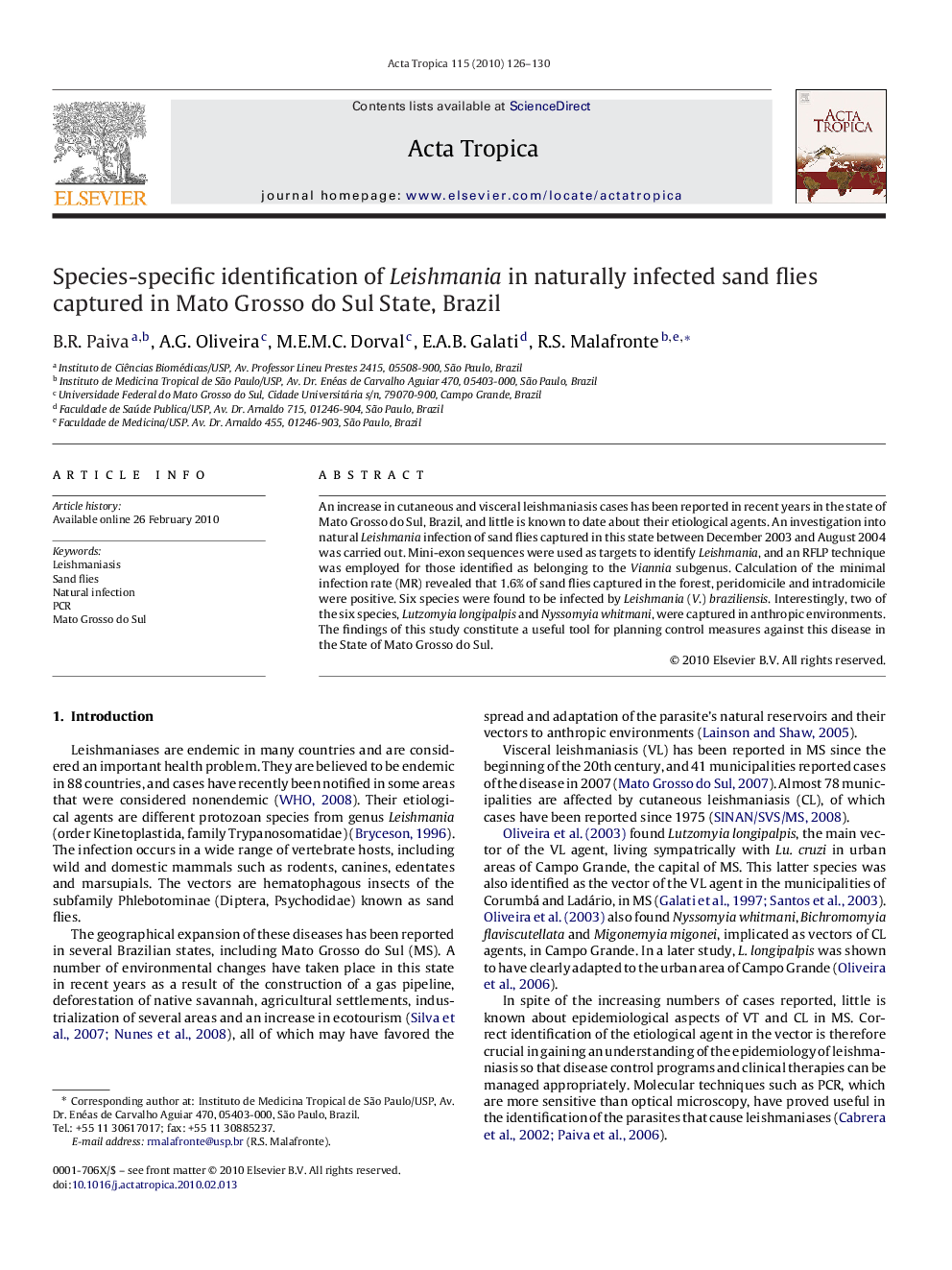| Article ID | Journal | Published Year | Pages | File Type |
|---|---|---|---|---|
| 3393977 | Acta Tropica | 2010 | 5 Pages |
An increase in cutaneous and visceral leishmaniasis cases has been reported in recent years in the state of Mato Grosso do Sul, Brazil, and little is known to date about their etiological agents. An investigation into natural Leishmania infection of sand flies captured in this state between December 2003 and August 2004 was carried out. Mini-exon sequences were used as targets to identify Leishmania, and an RFLP technique was employed for those identified as belonging to the Viannia subgenus. Calculation of the minimal infection rate (MR) revealed that 1.6% of sand flies captured in the forest, peridomicile and intradomicile were positive. Six species were found to be infected by Leishmania (V.) braziliensis. Interestingly, two of the six species, Lutzomyia longipalpis and Nyssomyia whitmani, were captured in anthropic environments. The findings of this study constitute a useful tool for planning control measures against this disease in the State of Mato Grosso do Sul.
Graphical abstractSix species of sand flies captured in the forest peridomicile and intradomiciliary were infected by Leishmania (V.) braziliensis: Evandromyia lenti, Lutzomyia longipalpis, Micropygomyia quinquefer, Nyssomyia whitmani, Psathyromyia aragaoi and Psychododpygus claustrei in a rate of 1.6%.Figure optionsDownload full-size imageDownload as PowerPoint slide
